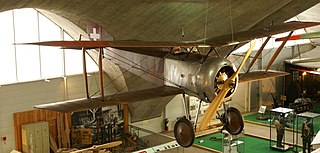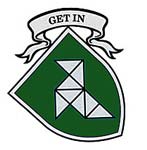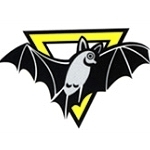The Groupe de Chasse was Belgium's first dedicated fighter wing. It was created in March 1918 at Les Moëres aerodrome near Veurne. On request of King Albert I, Captain-commandant Fernand Jacquet was appointed Commanding Officer, and the Groupe de Chasse also became known as the Groupe Jaquet. It consisted of the 9ème Escadrille de Chasse, the 10ème Escadrille de Chasse and the 11ème Escadrille de Chasse. [1] [2]

Belgium, officially the Kingdom of Belgium, is a country in Western Europe. It is bordered by the Netherlands to the north, Germany to the east, Luxembourg to the southeast, France to the southwest, and the North Sea to the northwest. It covers an area of 30,688 square kilometres (11,849 sq mi) and has a population of more than 11.4 million. The capital and largest city is Brussels; other major cities are Antwerp, Ghent, Charleroi and Liège.
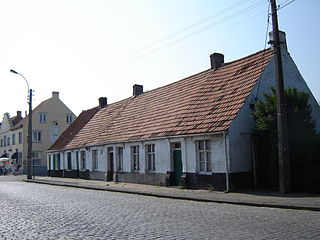
De Moeren (Dutch) or Les Moëres (French) are a marshy region in the Westhoek, politically divided between the French-Belgian border. At one time the area was inhabited by the Gallic people known as the Morini; they are believed to have lent their name to the territory.

Albert I reigned as the King of the Belgians from 1909 to 1934. This was an eventful period in the history of Belgium, which included the period of World War I (1914–1918), when 90 percent of Belgium was overrun, occupied, and ruled by the German Empire. Other crucial issues included the adoption of the Treaty of Versailles, the ruling of the Belgian Congo as an overseas possession of the Kingdom of Belgium along with the League of Nations mandate of Ruanda-Urundi, the reconstruction of Belgium following the war, and the first five years of the Great Depression (1929–1934). King Albert died in a mountaineering accident in eastern Belgium in 1934, at the age of 58, and he was succeeded by his son Leopold III.
By war's end, the group was able to support the offensive, and could manage to get up to 40 aircraft airborne at short notice. [3] In October 1918, the Group moved to Moerkerke. After the war, the three Squadrons were assigned to different aerodromes: 9 Squadron was stationed at Sint-Agatha-Berchem, [1] while 10 and 11 Squadrons moved to Bochum in Germany. [4]
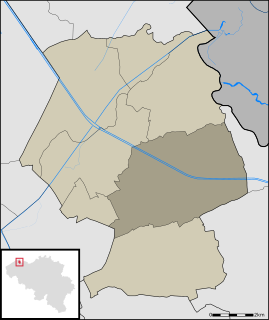
Moerkerke is a town in the Belgian province West Flanders and a part (deelgemeente) of the city of Damme

Berchem-Sainte-Agathe or Sint-Agatha-Berchem is one of the nineteen municipalities of the Brussels-Capital Region in Belgium.

Bochum is the sixth largest city of the most populous German federal state of North Rhine-Westphalia after Cologne, Düsseldorf, Dortmund, Essen and Duisburg, and its 364,920 (2016) inhabitants make it the 16th largest city of Germany. On the Ruhr Heights (Ruhrhöhen) hill chain, between the rivers Ruhr to the south and Emscher to the north, it is the second largest city of Westphalia after Dortmund, and the fourth largest city of the Ruhr after Dortmund, Essen and Duisburg. It lies at the centre of the Ruhr, Germany's largest urban area, in the Rhine-Ruhr Metropolitan Region, and belongs to the region of Arnsberg. It is surrounded by the cities of Herne, Castrop-Rauxel, Dortmund, Witten, Hattingen, Essen and Gelsenkirchen. Bochum is the sixth largest and one of the southernmost cities in the Low German dialect area. There are nine institutions of higher education in the city, most notably the Ruhr University Bochum, one of the ten largest universities in Germany, and Bochum University of Applied Sciences.


